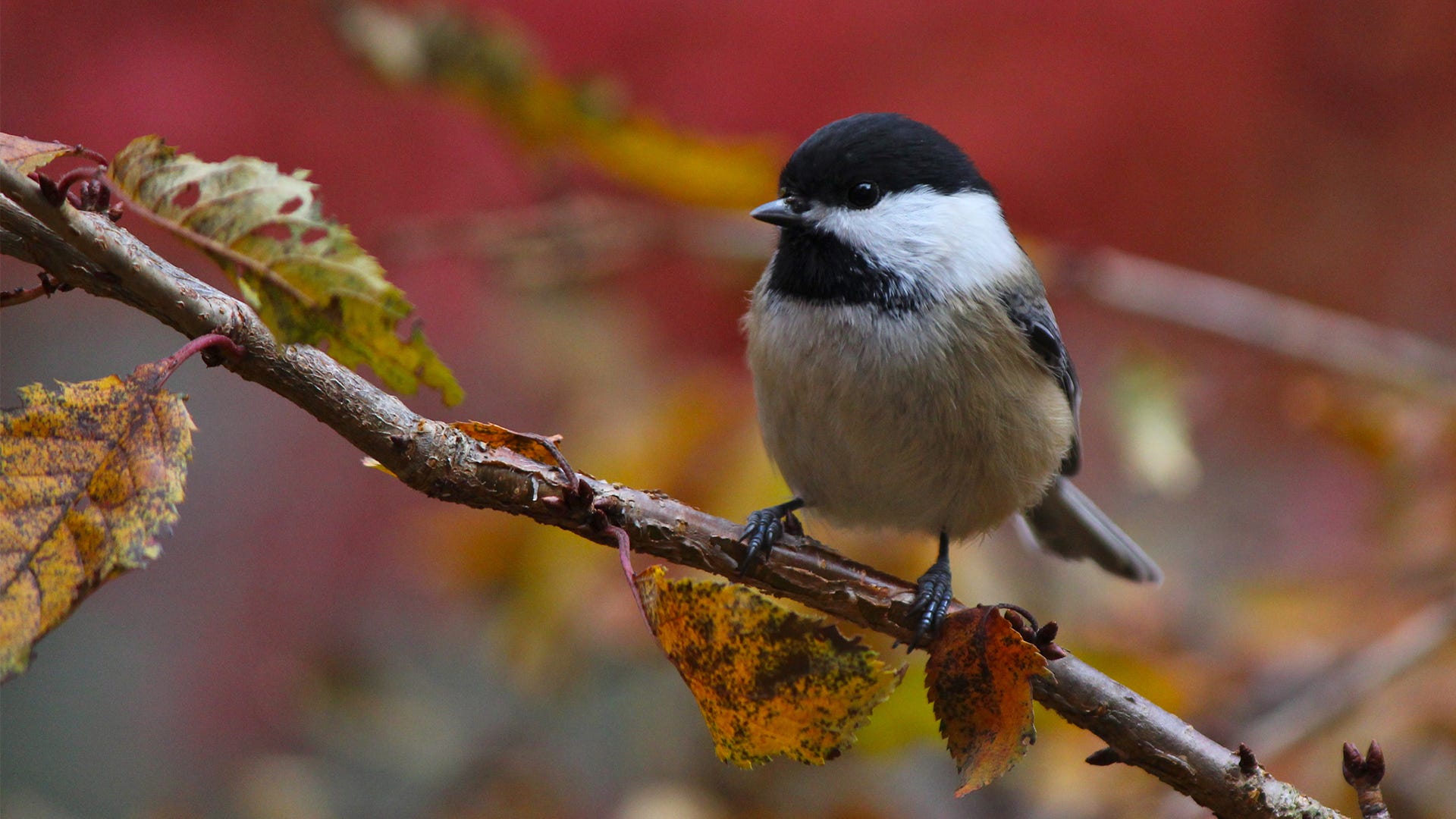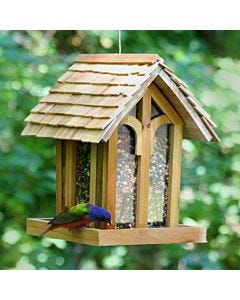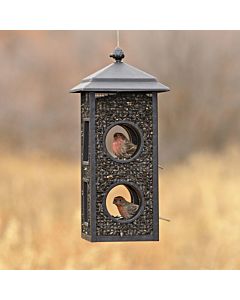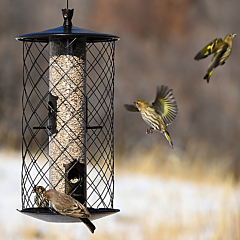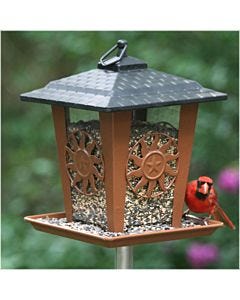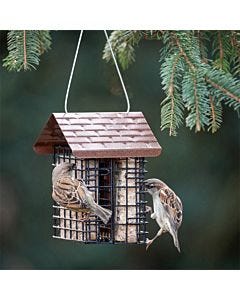With summer temperatures slowly subsiding and crisp, cool afternoons returning, you may notice a change in how often your bird feeders are being used.
For nearly all of the country, activity at your hummingbird feeders has ended. Don’t worry, those little beauties will certainly return in the spring. Use this time to clean your feeders thoroughly and safely store them over the winter.
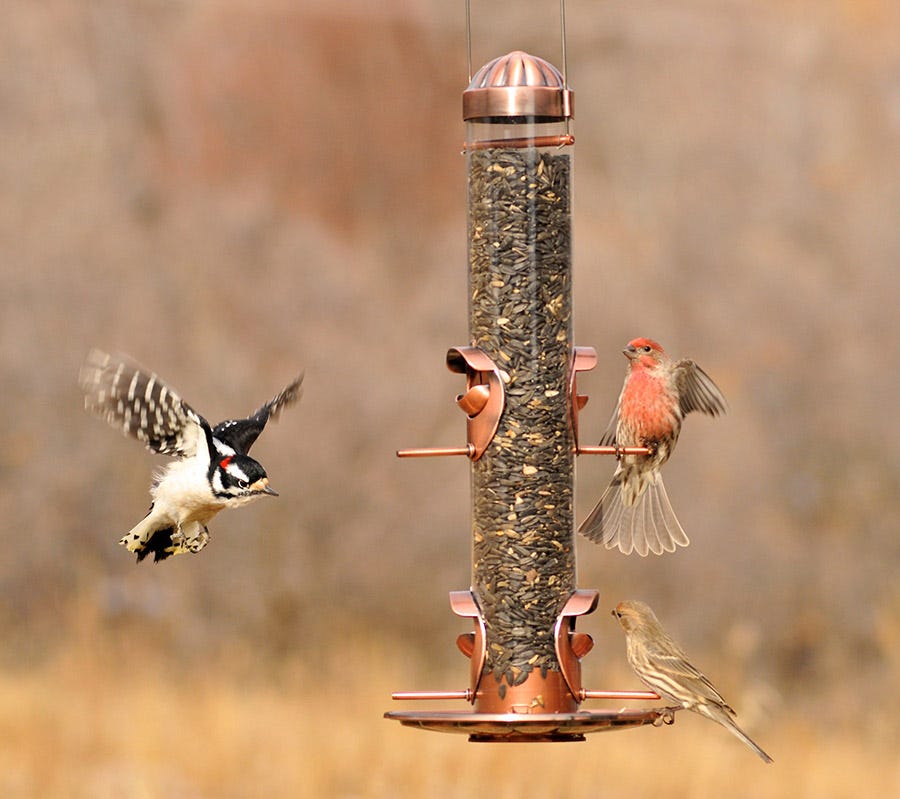 Though the hummingbird feeding season is largely over, your seed feeders are probably starting to see a big boost in activity. You may be getting visits from temporary guests as well as those looking for the perfect place to spend the winter. The temporary birds are probably on their way south and eager to fill up for the next leg of their trip. It’s great to help them on their way, but now is the time to let your winter birds know your yard is the place to stay!
Though the hummingbird feeding season is largely over, your seed feeders are probably starting to see a big boost in activity. You may be getting visits from temporary guests as well as those looking for the perfect place to spend the winter. The temporary birds are probably on their way south and eager to fill up for the next leg of their trip. It’s great to help them on their way, but now is the time to let your winter birds know your yard is the place to stay!
So what is the best way to transform your yard into a bird paradise this fall? The experts at Perky-Pet® have a few fall bird feeding tips!
Bird Scouts
All summer long, your resident birds are assessing and re-assessing their options for the fall and winter. They are learning where feeders are and scouting out locations to roost on cold winter nights. Since those decisions are being made months before the first snow flies, it’s best that you help them along. Start training these birds now! Set up your feeders in a safe location and keep them full so those birds recognize your yard as a reliable source of food.
Feeders They'll FALL For!
When Do You Begin Fall Bird Feeding?
The experts at Perky-Pet® suggest that you actually feed seed-loving birds all year long, not just during the fall and winter. At times, birds may suddenly lose their regular means of obtaining food. Providing a stable food source through spring and fall migrations, breeding season and during emergencies is extremely helpful to your backyard friends.
So if you decide to only feed during cold weather months, you need to know the best time to start. Check out this basic guide:
| FALL BIRD FEEDING | ||
|---|---|---|
| Region | Ideal time to start cold-weather seed feeding | |
| Alaska & Northern Canada | Late August | |
| Along Canadian Border | Early September | |
| Northern U.S. states | Mid September | |
| Pacific Northwest | Early October | |
| Rocky Mountain States | Late September | |
| Plains States | Early September | |
| New England States | Early September | |
| Mid Atlantic States | Early October | |
| Mid West States | Early October | |
| Southern States | Late October | |
| Southwest States | November | |
These time periods also mirror the migration periods of most birds in each area. Having food available for these birds will help attract resident birds to your feeders as well.
What’s the Best Food for Fall Bird Feeding?
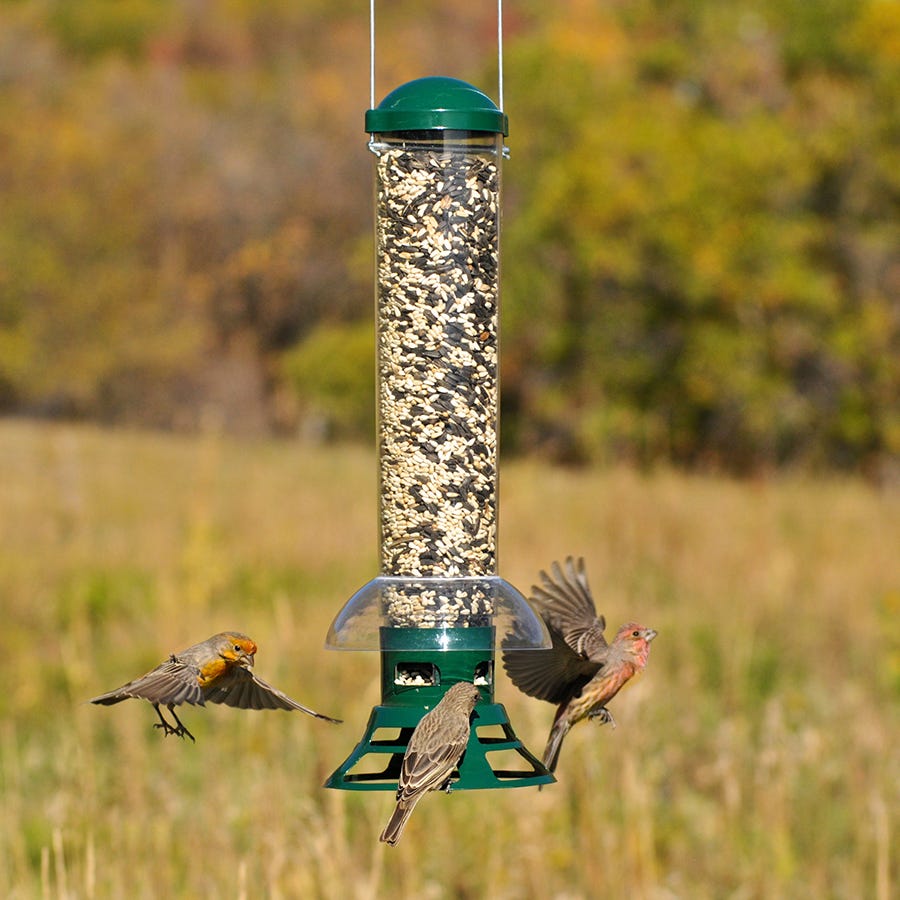 While many feeder birds will gravitate to a variety of food in the wild, once cool weather hits, those same birds will start looking for food that’s easy to get and packed with energy. That makes your bird feeders great for fall feeding — birds don’t have to scour the landscape to find it and you can control exactly what goes into it!
While many feeder birds will gravitate to a variety of food in the wild, once cool weather hits, those same birds will start looking for food that’s easy to get and packed with energy. That makes your bird feeders great for fall feeding — birds don’t have to scour the landscape to find it and you can control exactly what goes into it!
Try these ideas:
- Select the Right Seeds – There are many seed types available for your bird feeders. The best for fall feeding are those that have a lot of protein and fat packed inside of each bite. With that in mind, sunflower seed, peanut hearts and safflower seed are the best option for most birds. For many species, especially finches, thistle seed is also a good option. If you opt to buy mixed seed, look for those with high percentages of sunflower seeds, nuts and safflower seeds inside.
- Suet Cakes Deliver – With the right bird feeder, suet can be a valuable addition to your autumn bird-feeding efforts. This food is totally unlike bird seed – it’s rendered lard mixed with a number of other bird-friendly ingredients that is hardened into a cake-like wedge. Birds can then pick it apart to build up their own fat reserves. While many suet cakes can spoil in warm weather, they’re perfect for fall and winter feeding.
- Give Them Peanut butter – The easiest DIY bird feeder of them all is always a big hit with birds! Simply spread peanut butter on to a pine cone and hang it on a tree branch. Your birds will happily dig out every last bit of that high-protein, high-fat sandwich spread.
- Stop the Springtime Growth – Here’s a bonus hint for you! Feeding birds through the fall and winter can create an unexpected side effect in the spring – all the seeds birds dropped can start to grow! To avoid that, you need to sterilize your bird seed before it makes it into the feeder. There are two methods to do so. If you have a microwave, put about a gallon of seed in a paper bag and microwave it on high for five minutes. If you only have an oven, pour the seed on to a flat baking sheet and cook it at 300 degrees for 30 minutes.
More Ideas for Attracting Fall Feeder Birds
There is plenty more you can do to make your yard the perfect place for your visitors throughout the season.
- Water – Having a supply of clean water for birds to use is a huge attractant. You can try a bird waterer or install a bird bath. Whichever you do, make sure to change the water frequently and take steps to keep it from freezing.
- Ground feeding – Many bird species prefer to eat on the ground. Accommodate those birds by spreading a small amount of seed underneath your feeders.
- Alternatives to ground feeding – Of course you don’t have to drop food directly on the ground. You can also pour seed on a deck, railing or other inviting space that will attract ground foragers.
- Leaf raking & snow shoveling – Always try to keep the space under your feeder clear of anything that can hide seed that’s fallen to the ground. A pile of fallen leaves or a heap of snow can be the difference between a bird going hungry and a helpful meal.
- Keep feeders clear – When snow, ice, sleet and rain hit your yard, take steps to keep the bird seed in your feeders dry. In snowy weather, brush any accumulations on your feeder off. During wet and icy weather, put a limited amount of seed in the feeder until the rough weather passes. Soggy or frozen food can keep birds away.
- Stay clean – Remember, keep your feeders clean! All the activity at your feeders can also create a breeding ground for bird illnesses. A regular routine of feeder cleaning will really help them through the winter.
- Nest boxes – The autumn is a great time to clean out bird houses and nest boxes of the bedding placed inside during the breeding season. Pull out all that material and scrub the inside with warm soapy water.
Fall Bird Feeding Tips
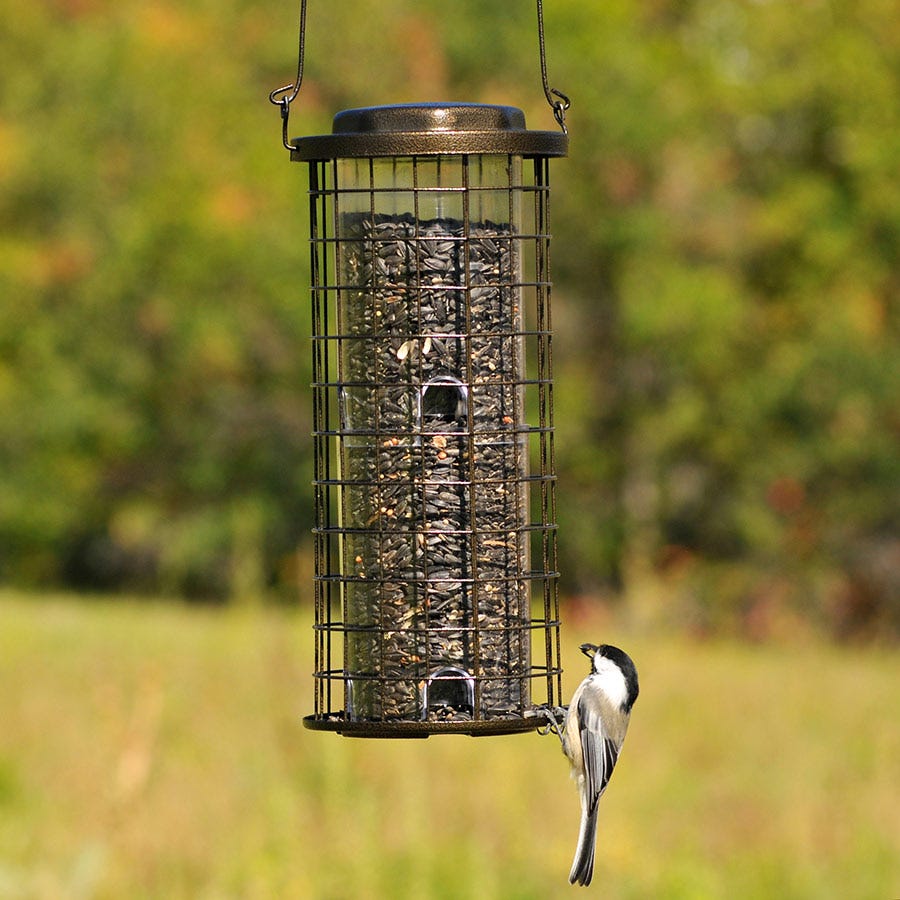 With these tips on feeding your backyard birds throughout the autumn, you can expect to see them through the winter as well.
With these tips on feeding your backyard birds throughout the autumn, you can expect to see them through the winter as well.
If you have any questions on bird feeding, visit us on Facebook! Also, be sure to sign up for our e-newsletter to get other great content as well as exclusive deals on your favorite bird feeders delivered right to your inbox.





